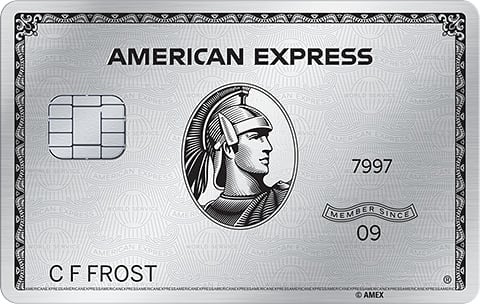What Is the Best Car Rental Company?
Enterprise dominates traditional rentals, but alternatives like Turo and Uber Rent are changing how travelers rent cars.

Many or all of the products on this page are from partners who compensate us when you click to or take an action on their website, but this does not influence our evaluations or ratings. Our opinions are our own.
Traditional rental car companies like Enterprise, Hertz and Avis still dominate the market with massive fleets and airport locations. But a new generation of rental alternatives — including Turo, Uber Rent and Zipcar — are offering compelling benefits that traditional companies can't match, from doorstep delivery to peer-to-peer rentals that put money directly in car owners' pockets.
According to the J.D. Power 2025 North America Rental Car Satisfaction Study, customers who skip the traditional rental counter save nearly eight minutes on average and report significantly higher satisfaction scores (704 vs. 662 on a 1,000-point scale). Yet 80% of travelers still visit the counter first, suggesting many don't realize these alternatives exist or how much more convenient they can be.
Let's compare traditional rental companies head-to-head, then dive into the rental alternatives that might better serve your needs.
For this analysis, we are considering eight major rental car brands:
- Alamo.
- Avis.
- Budget.
- Dollar.
- Enterprise.
- Hertz.
- National
- Thrifty.
These eight brands are all members of three larger car rental companies.
- Enterprise Holdings (Enterprise, National and Alamo).
- Avis Budget Group (Avis and Budget).
- Hertz Corporation (Hertz, Dollar and Thrifty).
Win Private Travel 'AMA' ($250 value)
Get the ‘cheat codes’ to using travel points and miles so you can spend less cash. 📥 Sign up for our free newsletter before Jan. 4 and enter to win a 1:1 travel rewards coaching session.

By availability
Winner: Enterprise
Each major car rental company group offers approximately the same number of rental locations. But Enterprise's fleet clearly stands out as the largest. While that won't guarantee Enterprise always has a car available, Enterprise certainly has more cars to go around.
However, note that Avis, Budget and Hertz offer car rental locations in more countries. So, these brands might be the best option depending on where you're traveling.
Number of rental car locations
The major car rental company groups each have an expansive global reach. But which offers the most options?
| Car rental group | Locations | Countries and territories |
|---|---|---|
| Enterprise Holdings (Enterprise, National and Alamo) | More than 10,000. | More than 90. |
| Avis Budget Group (Avis and Budget) | More than 10,000. | Approximately 180. |
| Hertz Corporation (Hertz, Dollar and Thrifty) | Approximately 11,600. | Approximately 160. |
When looking at each rental company individually, the picture is a bit more nuanced. Enterprise boasts more than 9,500 locations in nearly 100 countries and territories, while Alamo has just 1,100 locations across 84 countries.
Compared to Enterprise, the Hertz brand offers fewer locations (around 8,500) but more countries (146). Avis offers even fewer locations (around 5,500) but the most countries (165). That makes it hard to determine a single winner by the number of locations alone.
Size of rental car fleet
Since the number of locations netted mixed results, let's turn to the size of each company's fleet. And here's where we find a clear winner.
During 2022, Enterprise grew its fleet to more than 2.1 million cars. Meanwhile, the Hertz group maxed out at 547,400 vehicles, and Avis' rental fleet averaged 479,672 vehicles in 2022.
That means Enterprise's fleet is approximately double the combined fleets of Hertz/Dollar/Thrifty and Avis/Budget.
The fleet size paired with its larger number of locations makes Enterprise the clear winner by availability.

By pricing
Winner: Enterprise
NerdWallet completed a comprehensive analysis of rental car prices.
By checking prices for hundreds of rental car options, we identified the cheapest and most expensive airport locations, whether you should book in advance or wait until the last minute and whether it's worth commuting to a downtown location instead of renting from the airport.
This analysis also established the cheapest and most expensive car rental companies, and there was a clear winner and loser. For comparable seven-night rentals, Enterprise offered among the lowest rates (average $490), and National charged the highest (average of $601).
By loyalty program
Winner: Enterprise Plus
Once again, Enterprise comes out on top. Enterprise Plus offers the most traveler-friendly loyalty program of the three major car rental companies because:
- It offers members a straightforward earning rate.
- It has the lowest-cost redemptions.
- Its expiration policy is generous, lasting three years.
Avis Preferred gives Enterprise some competition thanks to a minimum earning rate on rentals. However, Avis' extremely short expiration period can make it hard for travelers to build up points over time.
Enterprise Plus
Travelers earn 1 Enterprise Plus point for every dollar spent on car rentals — before taxes, fees, fuel and surcharges. Free rental days start at 600 points.
That means you can earn a free rental day after spending $600 in base rental fees. Enterprise Plus points expire only if a member is inactive for more than 36 months (three years).
Avis Preferred
Avis Preferred members earn 1 point per dollar spent on rentals and 2 points per dollar spent on accessories — earning a minimum of 100 points per rental. Reward days start at 700 points, meaning you'll earn a free rental day for, at least, every seven rentals.
While Avis Preferred doesn't have blackout dates, reward days are grouped into levels based on the standard base rate for the rental. A 700-point redemption will only get you a free rental worth up to $50 base rate.
The downside is that Avis Preferred points expire if you don't have qualifying activity at least every 12 months.
Hertz Gold Plus Rewards
Gold is the base level in the Hertz Gold Plus Rewards program. Like Avis and Enterprise, Hertz members earn 1 Hertz Gold Plus Rewards point per dollar spent.
However, Hertz has devalued its Gold Plus Rewards programs twice in the past three years — generally with little to no notice.
As of the time of writing, Hertz Gold Plus Rewards redemptions start at 950 points for a 1-day Standard Rewards redemption or 1,900 points for a 1-day AnyDay Rewards redemption. Those are significantly higher redemption rates than those charged by either Avis or Enterprise.
Hertz Gold Plus Rewards points expire after 12 months of no rental activity.
CREDIT CARD RENTAL BENEFITS CAN TAKE YOU FARTHER
A number of popular travel credit cards can save you money on car rentals. Some give you bonus rewards for travel expenses in general or rental cars in particular. Some provide collision coverage that allows you to decline the "insurance" offered by the rental agency. Some give you elite status with rental car loyalty programs. Among cards with rental benefits:
Top cards for rental cars
Annual fee
$95.
$0 intro for the first year, then $150.
$895.
$795.
Rental car benefits
• Primary rental car coverage with reimbursement up to the cash value of most rental vehicles.
• Booking a car rental through Chase Ultimate Rewards® earns 5 points per dollar spent.
• Primary rental car coverage that reimburses up to the cash value of most rental cars.
• Other day-of-travel benefits for United flyers include a free checked bag, priority boarding and two lounge passes.
• Complimentary elite status with Avis, Hertz and National, which entitles the member to upgrades and discounts.
• Secondary rental car coverage.
• Other benefits include expansive airport lounge access and hundreds of dollars' worth of travel credits.
• Terms apply.
• Primary rental car coverage with reimbursement up to $75,000.
• Booking a car rental through Chase Ultimate Rewards® earns 8 points per dollar spent.
• Cardholders eligible for special benefits from Avis, National and Silvercar.
Learn more
To view rates and fees of the American Express Platinum Card®, see this page.
» See more options: Best credit cards for rental cars
By customer satisfaction
Based on all the above, it's no surprise that Enterprise ranked the highest in overall customer happiness, according to the October 2023 J.D. Power 2023 North America Rental Car Satisfaction Study.
Enterprise maintained this ranking from this report for the third year in a row. National came in as the runner up and in Alamo received third place in customer satisfaction.
Rental car alternatives
This ranking of traditional companies only tells part of the story. A growing number of rental car alternatives offer compelling features that traditional companies simply can't match. In many cases, they're outperforming legacy companies on convenience, flexibility and even price.
Turo: The Airbnb of cars
What it is: Turo is a peer-to-peer car sharing platform where you rent directly from car owners. With over 1,600 makes and models available, Turo offers everything from economy cars to luxury vehicles and vintage collectibles.
Why it stands out:
- Unique vehicle selection: Want to test drive a Tesla, rent a vintage Mustang or cruise in a luxury sports car? Turo's selection goes far beyond standard rental fleets.
- Flexible locations: Cars are available in neighborhoods, not just airports and downtown areas. You might find the perfect rental right next door.
- Competitive pricing: Car owners set their own prices, and many offer discounts for longer trips or advance bookings. Prices can be cheaper than traditional rentals, though not always.
- 24/7 pickup via Turo Go: Many cars offer keyless entry through the app, eliminating the need to coordinate meetups.
- Booking through Uber: As of May 2025, U.S. travelers (excluding Oregon, New York and Washington) can book Turo vehicles through the Uber app, making discovery even easier.
What to watch out for:
- Variable quality since you're renting from individual owners.
- Credit card rental insurance typically doesn't cover peer-to-peer rentals.
- Hosts can cancel last-minute without price protection for replacement vehicles.
- Trip fees range from 2.5% to 100%, plus potential young driver fees and other extras.
- Cleaning violation fees can add unexpected costs.
Best for: Travelers seeking specific vehicles, those needing flexible pickup locations, and anyone looking to test drive a car they're considering buying.
Uber Rent: Simplified booking with delivery
What it is: Uber Rent lets you book cars from major rental companies like Hertz and Budget directly through the Uber app. In select cities, Uber will even deliver your rental car to your door.
Why it stands out:
- Dead-simple interface: Booking is as easy as requesting an Uber ride. Just enter pickup/drop-off details and browse options with a few taps.
- Doorstep delivery in 24 cities: Available in Dallas, Phoenix, Charlotte, Las Vegas and 20 other U.S. cities (expanded by 15 cities in 2025), with cars delivered to your home, office or hotel.
- No price premium: Prices through Uber are generally consistent with booking directly through rental companies.
- Professional fleet quality: You're booking with major companies, ensuring consistent vehicle condition and service standards.
- Uber One benefits: Members earn 10% back in Uber One credits on all Uber Rent bookings (as of summer 2025).
What to watch out for:
- Limited to 24 cities, and delivery isn't available in all of them.
- You're still booking through traditional rental companies, so you're subject to their policies.
Best for: Travelers who want the convenience of traditional rental companies with the added benefit of simplified booking and optional doorstep delivery.
Zipcar: Urban car sharing by the hour
What it is: Zipcar (owned by Avis Budget Group) lets you book rental cars by the hour or day. Cars are parked in designated spots around cities and can be unlocked via the Zipcar app.
Why it stands out:
- Hourly rentals: Perfect for short trips without overnight parking concerns.
- App-based access: Unlock cars with your phone, no human interaction required.
- Professional fleet quality: Zipcar-operated vehicles meet traditional rental standards.
- Urban convenience: Cars available throughout cities, not just at rental facilities.
What to watch out for:
- Requires membership purchase plus a $25 application fee.
- Must return cars to the same pickup location.
- It's less ideal for longer trips or out-of-town travel.
Best for: City dwellers who need occasional car access for a few hours or a day trip, or travelers who only need a car for part of their trip.
What is the best car rental company?
Among traditional rental companies, Enterprise takes the crown with the largest fleet, competitive pricing, the best loyalty program and highest customer satisfaction scores. But the rental car landscape is evolving rapidly.
For many travelers, alternatives like Turo, Uber Rent and Zipcar offer compelling advantages, from doorstep delivery to peer-to-peer pricing to hourly urban rentals.
The best choice depends on your priorities: international availability, vehicle selection, convenience, price or consistency. Consider trying one of the alternatives on your next trip. You might find that skipping the rental counter and wait that comes with it is exactly what you've been missing.
To view rates and fees of the American Express Platinum Card®, see this page.
Insurance Benefit: Car Rental Loss & Damage Insurance
- Car Rental Loss and Damage Insurance can provide coverage up to $75,000 for theft of or damage to most rental vehicles when you use your eligible Card to reserve and pay for the entire eligible vehicle rental and decline the collision damage waiver or similar option offered by the Commercial Car Rental Company. This product provides secondary coverage and does not include liability coverage. Not all vehicle types or rentals are covered. Geographic restrictions apply.
- Eligibility and Benefit level varies by Card. Terms, Conditions and Limitations Apply.
- Please visit americanexpress.com/benefitsguide for more details.
- Underwritten by AMEX Assurance Company. Car Rental Loss or Damage Coverage is offered through American Express Travel Related Services Company, Inc.
How to maximize your rewards
You want a travel credit card that prioritizes what’s important to you. Here are some of the best travel credit cards of 2026:
- Flexibility, point transfers and a large bonus: Chase Sapphire Preferred® Card
- No annual fee: Wells Fargo Autograph® Card
- Flat-rate travel rewards: Capital One Venture Rewards Credit Card
- Bonus travel rewards and high-end perks: Chase Sapphire Reserve®
- Luxury perks: American Express Platinum Card®
- Business travelers: Ink Business Preferred® Credit Card
Article sources
NerdWallet writers are subject matter authorities who use primary,
trustworthy sources to inform their work, including peer-reviewed
studies, government websites, academic research and interviews with
industry experts. All content is fact-checked for accuracy, timeliness
and relevance. You can learn more about NerdWallet's high
standards for journalism by reading our
editorial guidelines.
On this page
More like this
Related articles











